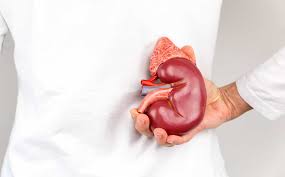Article
Peer Influence Impacts the Adoption of High-Value Cancer Treatments Over Time
Author(s):
A physician’s social network is important to determining the adoption of high-value cancer drugs, as researchers have determined peer influence had a strong association with the adoption of Avastin among oncologists across the nation.
An increase of the use of Avastin (bevacizumab) between 2007 to 2010, for multiple cancer types, was associated with prior recommendation from their physician peers, suggesting that a physician’s social network provides a way to leverage and promote high-value use of cancer drugs across multiple health systems, according to research from JAMA Network.
“With increasing efforts to ensure that physicians deliver high-value care, opportunities to influence physician prescribing decisions are of interest to policy makers and others seeking to improve the value of care,” researchers wrote. “This is particularly true with the proliferation of new oncology therapies, many of which have very high prices and modest or limited benefits.”
Avastin was first approved in 2004 to treat patients with colorectal cancer and since that time has been approved for treating patients with advanced stages of lung, breast, brain, cervix, ovary, and kidney cancers. Prior research had shown a widespread use of Avastin in oncology practices with a wide variety of use, according to researchers, this variation was left mostly unexplained, which led them to take an analytical look at the possible influence of a physician’s social networks on the use of Avastin.
To do this, researchers looked at a cohort study of 44,012 Medicare beneficiaries with either colorectal, lung, breast, ovary, brain, or kidney cancer treated by 3,261 oncologists from 2005 to 2010 in 51 randomly selected hospital referral regions. According to the researchers, data from fee-for-service Medicare patients in these hospital referral regions was used to define the physician networks due to the likelihood of physicians in this system to share and refer patients to one another.
Researchers then constructed physician networks based on these Medicare claims and identified pairs of physicians that shared patients from 2005 to 2006 that addressed that patient’s cancer, and further categorized the networks by the use of Avastin. “Bevacizumab use in the baseline period (2005-2006) across communities ranged from 0% to 31.5% of all patients receiving chemotherapy for the eligible cancers,” researchers wrote.
In the follow-up period, from 2007-2010, researchers identified 9,262 patients treated in this period by oncologists that had not previously used Avastin in the 2005-2006 period but were in the same network as physicians that used Avastin in the early adoption period. When comparing the networks of physicians with the highest adoption of Avastin, the physician communities that had higher rates of use in 2005 to 2006 were greater than those with the lowest use of Avastin in the early adoption period of 2005 to 2006. Based on these findings, researchers believe that interventions for future high-value cancer drugs should utilize pre-determined physicians’ networks to promote adoption, as it naturally did that in the case of Avastin.
“Simply having contact with one colleague who has adopted a treatment would be sufficient for another physician to start using it. In contrast, complex contagions do not spread virally. They require social reinforcement,” said Dr. Damon Centola in a commentary piece from JAMA Network addressing the importance of the results of the trial. “If physicians have concerns about the credibility of a new treatment, or about its perceived legitimacy within their medical community, then simply having contact with one colleague who has adopted it will typically not be sufficient to convince a clinician to start prescribing it. Social reinforcement from several peers is needed to demonstrate that a treatment is seen as legitimate within their medical community.”




